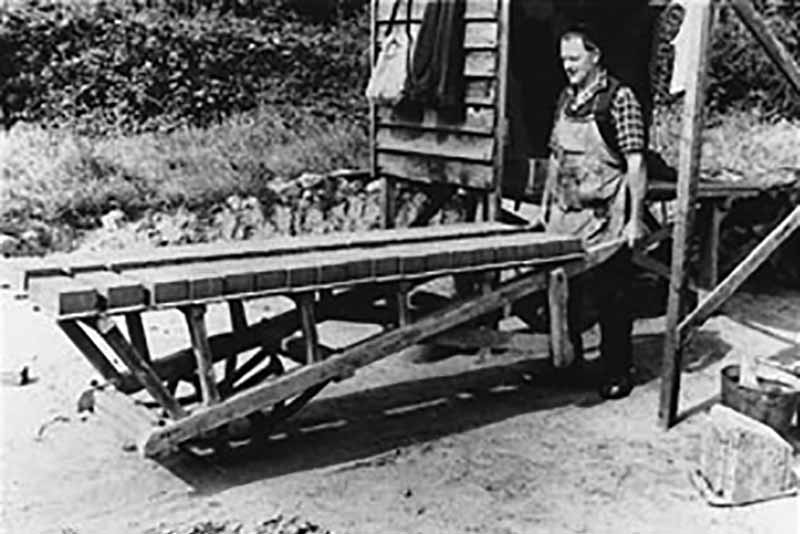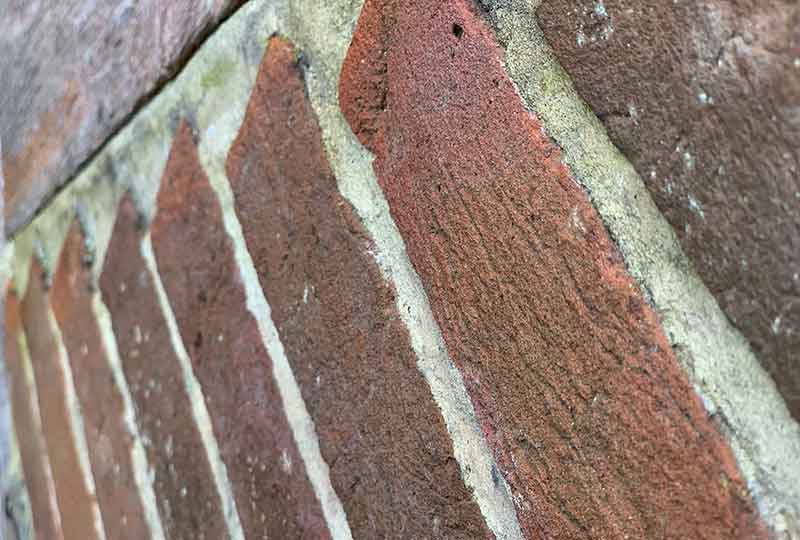
At one end of this shed is a brickmaker’s bench. The rest of the building was used to stack ‘green’ bricks and tiles to dry before being fired. An exhibition in the building describes the history of brickwork in the region.
This drying shed, which is 80 feet long, was built in 1733, and came from the Causeway Brickworks, near Petersfield. The brickworks closed down early in the Second World War — in common with many others — because the glow from the open-top kiln was an obvious landmark for enemy aircraft.
Another, more recent, drying shed from the same brickyard has been re-erected at the Amberley Working Museum.
Share
Overview
Dates From
1733
Dismantled
1979
Reconstructed
1988
Original Location
Petersfield, Hampshire
Building History
Background Information
The main purpose of the shed was to cover ‘green’ (freshly moulded) bricks while they dried before being fired. Bricks will crack if they dry too quickly or unevenly, so movable wooden screens were used to protect those at the sides of the shed from wind and sun.

Removing newly moulded bricks on a “hack barrow” to be dried.
The drying process takes from three to six weeks, after which the bricks would be fired in a kiln. Many brickyards did not have drying sheds, but stacked the bricks on ‘hacks’ (prepared bases) in the open and covered them with removable ‘hack covers’, some examples of which are on display in the drying shed.
The shed was also used for brickmaking. The maker’s bench is in the end bay, and has been set up with a mould and stock, cockle, strike and water tub. The barrow by the bench was used to carry green bricks from the bench to the hacks.
Making Bricks by Hand
Clay is dug from the ground and left to break down by frost action over the winter. In the spring it is taken from the pile and mixed as necessary with other ingredients such as sand, other clays, lime or clinker. It is then ground in a pugmill.
To mould a brick, the maker first sands the mould to prevent the clay from sticking. A lump of clay is thrown into the mould and pressed into the corners. The excess clay is then taken off the top with a ‘strike’.

The green brick, which is wet but firm, is turned out onto a thin board for loading on the barrow. A barrow-load of green bricks is then taken to a drying ‘hack’. The bricks are stacked up in a long line, either in the open (covered with straw, or movable ‘hack covers’) or in a drying shed.
When dry, the bricks are placed in a kiln or clamp. A kiln is heated by continually burning fuel in the firing hearths, whereas in a clamp the burning material is included within the bricks themselves in the form of clinker in the clay. Firing the kiln or clamp takes several days.
After a gradual start to drive off moisture, the temperature is increased to about 1100°C, until the bricks are all burnt. The kiln or clamp is then allowed to cool before the bricks are unstacked ready for use.
Top 3 Interesting Facts

A Very Long Building
At 80 foot long, or c.24m, the building can provide cover for a large number of freshly moulded bricks whilst they dry.

Building in Brick
Increased use of bricks as an affordable, durable building material can be seen in more recent buildings at the Museum and beyond.

Slowly Drying Bricks
To successfully make bricks, they need to be dried slowly over a few weeks so they don’t crack prior to firing in a kiln.







